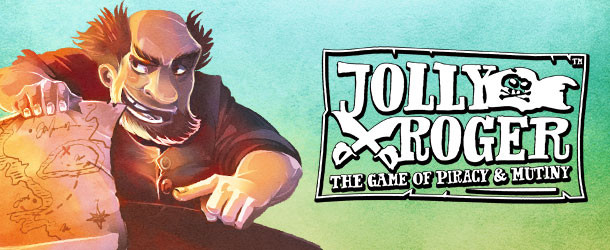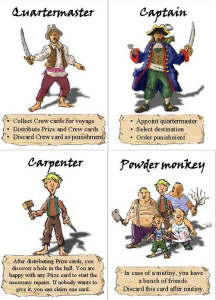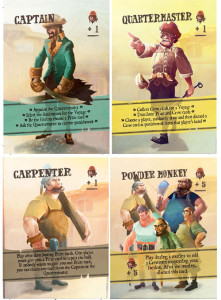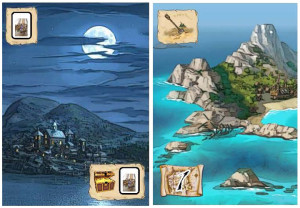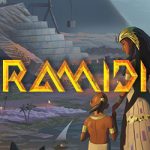The first ideas for designing Jolly Roger came up in 2006. The trigger for it was playing the game “Junta” with my friends again. “Junta” is an old game from 1979 where players try to put the most money from a Banana Republic into a Swiss bank account. Insurrection and fierce street fights are the key words of this game. What I especially liked in this game was the different roles the players could play after being appointed by the president and, of course, the possibility starting a rebellion. Unfortunately, the game was very, very long to play and is now completely outdated, despite a reprint in 2008.
So, the challenge for me was to make a nice game with a lot of interaction and a short playing time. The idea of using a pirate theme was a logical first step. Pirates and mutiny go hand-in-hand, and that was exactly what I was looking for.
The next decision was to make a card game. Players who like card games are looking for fast-paced games. Besides, after my success with "Saboteur", which was launched in 2004, I was looking to make another game which was playable with a large number of players. Card games require simple mechanisms and are, therefore, perfect for this purpose.
As opposed to “Junta,” where the president appoints his staff and distributes the money at his own discretion, I liked the idea, after some research, of giving an important role to the quartermaster, the captain’s right-hand man. They would work in tandem: the captain making the decisions and the quartermaster executing them. This could sooner or later lead to a disagreement, which creates tension among the key roles.
It was also important to find a way to frustrate the other players, to fuel their mutinous spirit. First, I thought it could be interesting for the captain to appoint other roles too, but I skipped this idea to keep it simple. Now, all other players are simply crewmembers of the pirate ship.
Anger and frustration is mainly generated by the unfair distribution of the Prize cards. Even if the Quartermaster wants to distribute as fairly as possible, the game system prevents it: the available amount is always changing and the value of the cards is quite variable.
I also added the “punishment” concept, which is rather uncommon in a game, but appropriate and fun for this one. The vicious thing is the captain may order a punishment, even if the quartermaster doesn’t want to execute it. As I wanted to have a lot of interaction, even with more or less simultaneous game-play. I found two moments in the game where this could be achieved: first, when conquering a Prize, where all players can participate to help the attack succeed and secondly, during a mutiny where all players can support either the captain or the first mutineer. So, it was obvious to make cards with a double use: icons to conquer prizes and crewmembers to use during the mutiny.
To spice up the game, I started imagining a lot of unique cards, which you can play to trigger a special effect. All these special cards add a lot of chaos to the game, which is necessary to avoid players beginning to play in fixed teams against each other. The more the situation among the players changes, the funnier the game becomes. A game like this requires a "space" where you could put your gold safely - the Treasure Island, of course - otherwise money is just going back and forth between the players. I also introduced a limitation - you can’t go to Treasure Island unless you have a map. So, if the captain doesn’t have the right card in his hand, he needs to ask for help from his crewmembers. This can create an interesting negotiation.
When the basic mechanisms of the game where created, it was time to make a first prototype and playtest it. I remember the response was quite positive and we had a lot of fun playtesting and fine-tuning the game. Finding the right game balance in an asymmetrical game with a wide range of players is rather difficult and requires a lot of different playtesting situations. After each small change, you must test it again to see what effect it has on the other mechanisms.
After several months of development, in the fall of 2006 I thought that the game was more or less finished, and I started to present it to different publishers. While I was confident I had a great game at hand, it was more difficult than I expected to convince a publisher of it. During the following years, several publishers got a sample of the game but, one after another, decided not to publish it. Sometimes, it was the presence of text on the cards, on another occasion it was the pirate theme, which was already used in another game. All the reasons to decline were good. To increase my frustration, all publishers told me they liked the game, but it was, unfortunately, “not suited for their collection”.
Finally, I met Roberto from Ares in Essen 2013. I already knew him for many years (when he was declining other game projects of mine!) and he showed an immediate interest in the Jolly Roger game concept. We quickly reached a publication agreement and after some last fine-tuning, thanks to the development team of Ares, the game is finally in production and will be released for fall 2015.

